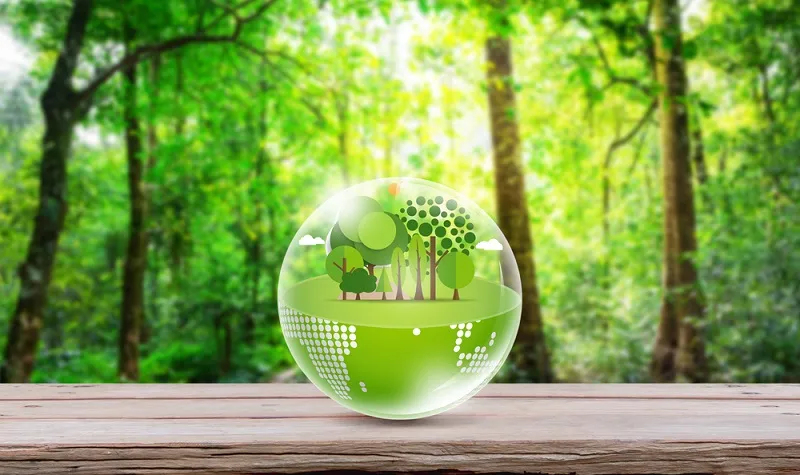If you want to be green, clean up your supply chain
There are many ways of combating climate change and ensuring environmental sustainability. One of the less-talked about subjects is ‘supply chain sustainability’.
The term itself might sound obvious, but the issue is not as simple as it might sound. There’s a definition too, if one were to go by how the subject is described as on Wikipedia:
‘Supply chain sustainability is a business issue affecting an organisation’s supply chain or logistics network in terms of environmental, risk, and waste costs. There is a growing need for integrating environmentally sound choices into supply-chain management. Sustainability in the supply chain is increasingly seen among high-level executives as essential to delivering long-term profitability and has replaced monetary cost, value, and speed as the dominant topic of discussion among purchasing and supply professionals. A sustainable supply chain seizes value creation opportunities and offers significant competitive advantages for early adopters and process innovators.’
There’s a more ‘business-like’ definition too, that was propounded by Craig Carter and Dale Rogers of the College of Business Administration, University of Nevada in 2008. Writing in the International Journal of Physical Distribution & Logistics Management, they defined sustainable supply chain management as “the strategic, transparent integration and achievement of an organisation’s social, environmental, and economic goals in the systemic coordination of key inter-organisational business processes for improving the long-term economic performance of the individual company and its supply chains”.

It is the Carter-Rogers definition that has considerably explained how supply chain sustainability should be met in an organisation.
But then, it’s a subject area that is slowly gaining prominence, the operative word being “slowly”. If it’s a question about trends, some indicators are available in the ‘Sustainable Supply Chain Trends 2015’report just published by Ethical Corporation. The report features insight from 415 CSR and supply chain professionals primarily based in Europe, North America and Asia Pacific.
Some highlights:
- Eliminating supply chain risks is the main driver: Over 32 per cent of executives polled say they are still incentivised by eliminating supply chain risks.
- Industry collaboration is the biggest opportunity in 2015/2016: just over 24 per cent say that industry collaboration is the single most exciting opportunity in relation to supply chains sustainability. The second most exciting is creating a circular economy and third is customer/ consumer awareness, at 16 per cent and 11 per cent respectively.
- Traceability and environmental concerns are the biggest issues to watch out for in 2015/2016: Nearly 30 per cent of the community stated that traceability and environmental improvements will be key issues in the coming years.
None of the numbers are on the higher side as yet, indicating that something is still amiss somewhere. The drawbacks were pointed out earlier this year in a study released by CDP, the international NGO formerly called Carbon Disclosure Project, and Accenture.
The report Supply chain sustainability revealed: a country comparison revealed that lack of preparation is currently leaving supply chains in Brazil, China, India and the United States more vulnerable to climate risks than those in Europe and Japan. The research was based on data collected from 3,396 companies on behalf of 66 multinational purchasers that work with CDP to better understand and manage the environmental impacts of their supply chains.
The CDP-Accenture report revealed more international trends:
- Suppliers in France, the UK, Spain and Germany are the most sustainable. They take extensive measures despite comparatively low levels of exposure to climate risk.
- Japan is the only country with suppliers that are well-equipped to respond to high climate risks as they have matched their awareness and actions with the high levels of risk to which they are exposed.
- Suppliers in China, Italy and the United States are vulnerable.
- Brazil, Canada and India must do more as suppliers there report fewer emission reduction initiatives than the global average.
- A collaborative approach and profitable emissions reductions initiatives give China and India a competitive edge.
- Suppliers in China and India offer the best return on investment in terms of emissions reductions and monetary savings.
So, what can be the way out?
This was charted out in another study that was produced by the World Economic Forum (WEF) in collaboration with Accenture. The report Beyond supply chains: Empowering responsible value chains, released in March, identified 31 proven practices to help companies achieve a “triple supply chain advantage” of increased revenue, a reduction in supply chain cost and added brand value. The practices also help companies shrink their carbon footprint and contribute to local development, including the health, welfare and working conditions of the communities in which they operate.
There are some other documents that can help one get started:
- Sustainability is free: The case for doing the right thing; an article published by Supply Chain Management Review in November 2011
- Practical Guide for Continuous Improvement; published by UN Global compact







